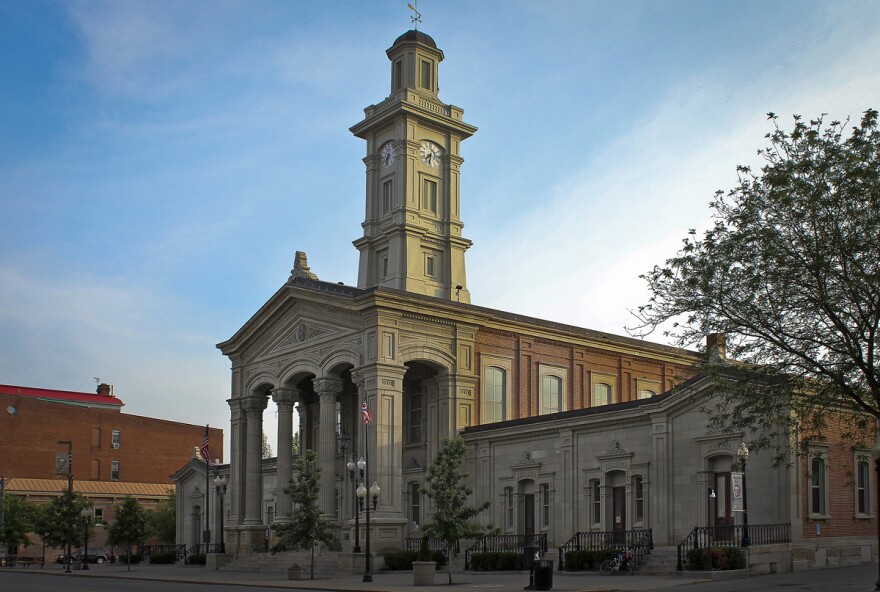Zane’s Trace was one of the earliest roads in the state but the site we’re visiting today predates that early road. The Hopewell Culture National Historical Park traces a culture that goes back 12,000 years.

"There were mounds all over Ohio. They are what I call little humpy mounds. That look like hills that were built in what we call the Adena period. Roughly 800 to 300 BC. There were massive geometric enclosures built between 100 BC and 300 AD. Circle squares and polygons and funny shapes that you could walk into," says Dick Shiels, Director of the Newark Earthwork Center. He is an expert on the Hopewell Culture that that was in this part of Ohio between 200 B.C. and A.D. 500.
We know of 600 sites within Ohio where there were earthen enclosures.
"We believe that our best interpretations of these sites is that they were ceremonial sites that people came to from great distances for ceremony. That is to say they were places of pilgrimage," says Shiels.
The Hopewell Culture National Historical Park preserves earthwork complexes which are on several acres of land right behind the Center.
"Turns out a good place to build a geometric earthwork complex is also a really good place to build a modern American town."
"Groups followed new ecosystems, following new practices. In the Hopewell period we’re often looking for the confluence of rivers, second terraces with good drainage. Springs just above and nice river valley below. Turns out a good place to build a geometric earthwork complex is also a really good place to build a modern American town. People didn’t set out in the early stages, to destroy them. But they built in them," says Jeff Gill, Program Assistant for the Newark Earthworks Center, OSU/Newark.
Archeologists have documented thousands of sites in the Ohio River valley but few have survived intact. The mounds here were threatened and saved by one event.
"Connected with the Hopewell, for better or worse, is Camp Sherman. That was a large army training camp that was built here during WWI, in 1917. Although, it helped further destroy Mound City here at the park, it also led to its reconstruction and preservation of the park," says Kevin Coleman, local historian.
1,370 buildings, in an extensive complex, were constructed in the rush to get soldiers trained for the Great War.
Camp Sherman became the 3rd largest training camp in the nation. Before the war was over more than 40,000 soldiers had trained there. After the war the camp was dismantled and , in 1920, archeological digs began to amass a collection of more than 167,000 Hopewell artifacts.
Today, throughout the Chillicothe area you can find great examples of Native American Earthworks. Some survived the settlers and some are finely constructed re-creations.
You can download an audio tour of Zane’s Trace – A Road into the Wilderness at SeeOhioFirst.org. It’s Tour Number 5. The New Ohio Guide is produced by the Ohio Humanities Council, a state affiliate of the National Endowment for the Humanities.

